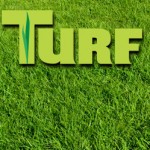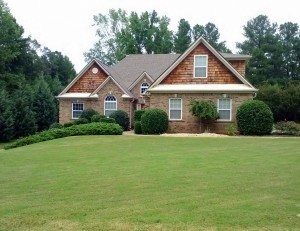Depending on where you live, certain trees work better in your yard than others. If you’re thinking about planting one popular variety or another, it’s best to first learn whether that tree grows well in your region or not. It’s time to get smart about trees and find out which ones you should plant for the best results.
Understanding Plant Hardiness Zones
The simplest way to figure out where a certain tree can grow is to identify its hardiness zones. North America is divided into 11 numbered zones, with Zone 1 describing subarctic conditions in Northern Canada and Alaska, and Zone 11 describing the tropical regions of Southern Mexico. In general, the further north you live, the lower your plant hardiness zone number is. In some maps, you may see zones further divided by the letters “a” and “b.” This lets you more accurately narrow down which zone you live in.
For your reference:
- Winnipeg is in Zone 3
- Quebec City is in Zone 4
- Denver is in Zone 5
- Nashville is in Zone 6
- Oklahoma City is in Zone 7
- Savannah is in Zone 8
- Phoenix is in Zone 9
- San Diego is in Zone 10
- The coasts of Baja California are in Zone 11
Limitations of Hardiness Zones
While zone maps are helpful, they do have shortfalls. The information may be inaccurate based on the micro-climate of your exact location. Soil moisture and pH levels, elevation, ground slope, wind, sun exposure, and other conditions may prevent a tree rated for your climate zone from thriving.
For example, coastal Seattle is in Zone 8, as is dry Tucson, but the same plants won’t necessarily grow in both places. Keep this in mind when assessing your climate conditions and choosing which trees to plant.
Quaking Aspen
- Hardiness: Zones 2 through 6
- Micro-climate preferences: Aspens do best when planted in moist soils with full sun exposure. They can’t tolerate shade or summer heat, making them ideal for the Canadian and Northern US climate. However, they are also susceptible to damage in ice storms.
Quaking aspens got their name because their flat leaf stalks tremble in the wind. Beautiful powdery white bark and bright yellow leaves in fall make aspens a beautiful addition to your yard.
Elm Trees
- Hardiness: Zones 3 through 9
- Micro-climate preferences: These trees prefer moist yet well drained soil and full sun exposure. They adapt well to extremes in soil pH and have a high heat and wind tolerance. They’re native to the eastern half of North America.
Elms are praised for their stately shape and wide, spreading branches. Their leaves turn a beautiful gold color in the fall. Keep in mind that elms are susceptible to a devastating condition called Dutch elm disease. To prevent your elm from succumbing to this pathogen, be sure to choose a hybrid bred for resistance to Dutch elm disease, including Princeton and Valley Forge elm.
Cedar Trees
- Hardiness: Zones 4 through 8
- Micro-climate preferences: Native to the humid Pacific Northwest, cedar trees love continually moist, loamy soil and full sun exposure. They’re also very cold hardy, as is typical of evergreen trees.
The beautiful drooping bows of Alaskan cedars covered with green-grey needles create great visual interest in your yard. These trees grow to a medium size of up to 45 feet tall and 30 feet wide. Smaller varieties of cedar – the weeping Alaska cedar in particular – are available if you love the look but don’t have the space.
Beech Trees
- Hardiness: Zones 4 through 9
- Micro-climate preferences: Beech trees prefer acidic soils and tolerate alkaline soil moderately well. However, they can’t tolerate overly salty, wet or drought conditions. They prefer full sun or partial shade.
Beech trees have large, graceful branches that spread wide and hang low, making them ideal for large landscapes where you want plenty of shade. Massive trunks show off beautiful silver gray coloring, and dark green summer foliage turns bronze in the fall. Leaves hold on well into the winter months, providing beautiful seasonal interest. Beeches grow slowly and don’t transplant well, so be sure to select your planting location carefully.
American Hornbeam Trees
- Hardiness: Zones 3 through 9
- Micro-climate preferences: These flexible trees grow in a wide variety of climates and are native to eastern North America. Hornbeams do well in full sun, partial shade or full shade. They prefer acidic, moist and well drained soil, but they can also tolerate drought conditions and poor drainage.
The ability of hornbeams to grow in the shade makes them perfect for shady landscapes and woodland gardens. They provide a kaleidoscope of colors, starting with reddish-purple leaves when they first emerge in the spring. These turn dark green in the summer and yellow to orange-red in the fall. Be aware that hornbeams are difficult to transplant because of spreading lateral roots, so choose your planting location carefully.
Bald-Cypress Trees
- Hardiness: Zones 4 through 11
- Micro-climate preferences: Native to Southern wetlands and coastal areas, cypress trees prefer full sun to partial shade. Swampy, acidic soil produces the best results, but bald-cypresses also tolerate alkaline soil, drought conditions and poor drainage.
Bald-cypress trees can grow up to 70 feet tall and 30 feet wide. Unlike most evergreens, they lose their needles in the fall and grow new ones in the spring. The soft, feathery needles turn a russet-red color before falling to the ground.
Give us a call for more personalized tips!
Because of the limitations of hardiness zone maps, it’s helpful to work one-on-one with a local landscape specialist to make sure you choose the right trees for your micro-climate. The Grounds Guys offers comprehensive tree services, which range from helping you select the right trees to assessing the health of your current plants to laying fertilizer and spraying for pests.
To learn more about which trees are right for your yard, or to schedule tree services, please contact us. Our goal is to help your landscaping look its best all year round!




